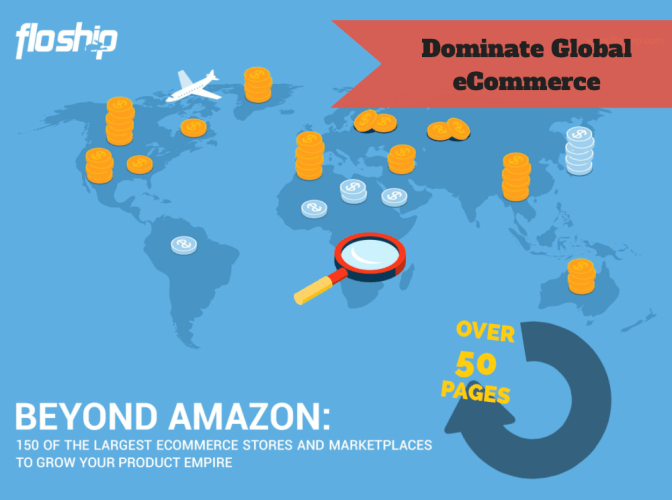Asia’s rapidly evolving e-commerce landscape means that online retailers must constantly review their offerings or risk losing out to the competition.
In this post, we’ll look at the six most important merchandise fulfillment trends shaping the e-commerce industry in 2017 and what they mean for your business.
1. Asia-Pacific Will Become the Largest E-commerce Market
According to Forrester, e-commerce sales in Asia-Pacific will reach $1.4 trillion by 2020, with the Chinese e-commerce market topping $1.1 trillion.
Asia-Pacific is already the largest e-commerce market in the world, having overtaken North America in 2014 with $525.2 billion in online sales.
Data gathered by eMarketer suggests that Asia-Pacific’s rapid growth in the online marketplace can be attributed to the development of technology in the region.
China, India, and Indonesia are expected to experience the fastest growth rates and will become the major players in the expansion of the Asia-Pacific Market, according to eMarketer.
2. Online Marketplaces Will Rule
As more and more online shoppers realize the benefits of using online marketplaces such as eBay, Amazon, and Alibaba, a growing number of retailers will make their products available on these marketplaces through 2017.
According to Volusion, retailers are planned to spend 32 percent more to sell their products via online marketplaces in 2016 and 2017 there appears no slow down in sight.

Online marketplaces offer small retailers an opportunity to grow quickly by allowing them to showcase their products on a high-traffic website.
Customers are more likely to buy unknown products on a marketplace, where they are protected by guarantees like eBay’s Buyer Protection.
Such guarantees make customers feel more comfortable buying products from lesser-known merchants. Amazon and eBay accounted for 27% of North American online sales in 2015, according to Internet Retailer.
3. Mobile, Mobile, Mobile
Mobile e-commerce will continue to see growth as new technology makes mobile browsing and shopping easier for consumers.
Developed markets like Hong Kong, Japan, Taiwan, and Singapore have been mobile technology powerhouses in the last few years, with “mobile-only” or “mobile-first” markets like Indonesia, India, Vietnam, and Malaysia quickly catching up.
In fact, smartphones are now involved in the majority of mobile transactions in every major market, with the Asia-Pacific region leading the pack, according to Criteo.
Indonesia is the fastest growing market and has the highest mobile transaction share, with more than 83% of purchases made on smartphones as opposed to tablets.
4. Asia-Pacific Will Lead Cross-Border E-Commerce
According to U.S. Technology firm Pitney Bowes’ Global Online Shopping Survey, online shoppers in Asia-Pacific make the highest number of cross-border purchases, with Singapore (89 percent), Australia (86 percent), and Hong Kong (85 percent) at the forefront.
“As domestic online shopping becomes more frequent, it can create familiarity and comfort to reach across borders,” the report concluded. The report also listed listed Canada and Mexico among the countries with the most monthly and annual cross-border purchases worldwide.
Pitney Bowes also noted a global trend whereby customers making brick-and-mortar purchases while traveling internationally are following up with cross-border online orders from the same retailer. Hence, the need to have cross border merchandise fulfillment as an option cant’ be understated.
5. Merchandise Fulfillment: It’s All About Visualization
Expect product images to play a crucial role in e-commerce as more and more retailers start selling their products online.
From consumer electronics to children’s toys to home appliances, future sales of just about any consumer product will depend more on images and visualization than they ever have.
To survive in the new marketplace, e-commerce retailers will need to embrace more innovative ways of showcasing products that have traditionally only been sold in bricks-and-mortar stores.
Online shoe retailer Zappos, for example, is already taking advantage of video technology to improve product visualization.
New visualization technologies such as virtual reality will completely change the e-commerce landscape over the next 2-3 years, allowing retailers to offer virtual dressing rooms and other creative ways to need their online customers’ needs.
6. Business-to-Business Will Take Over
Business-to-business (B2B) e-commerce has seen significant growth in the last few years due to the migration of wholesalers and manufacturers from legacy systems to online platforms.
As more and more businesses abandon the clunky, expensive legacy systems in favour of efficient online systems that simplify global transactions, B2B e-commerce is expected to explode.
Advisory firm Frost & Sullivan predicts that B2B online retail sales will top $12 trillion worldwide by the year 2020, with China and the United States leading the B2B e-commerce market.
Expect private industrial networks and marketplaces to continue to grow as more companies take advantage of online platforms to sell commercial goods and services.
Conclusion
The ever-changing nature of the e-commerce industry means that online retailers must constantly devise new and innovative ways to meet their customers’ needs.
To remain competitive in this new marketplace, online retailers need to monitor market trends and adapt their offerings to what customers want.
Whether this means building a mobile app, selling products on online marketplaces, innovating in you merchandise fulfillment practices, or branching out into new markets, anticipating and meeting your customers’ desires is the key to staying ahead of the competition.
Stay ahead of the trends with Floship’s global e-fulfillment solutions, check it out here
Related E-fulfillment Articles
- Uncover Business Opportunities in Crossborder E-Commerce
- E-Fulfillment for Retailers Ship Worldwide
- E-Commerce Fulfillment: Shopify Order Expansion
- Hong Kong Fulfillment: the Missing Piece in YOUR International E-commerce Strategy
The 5 Minute Guide to Scaling Your Shopify Shipping Strategy
Automate Your Fulfillment & Shipping

Ready To Upgrade Your Logistic Solution?
Speak to Floship ecommerce logistic consultant about improving your global support chain today






